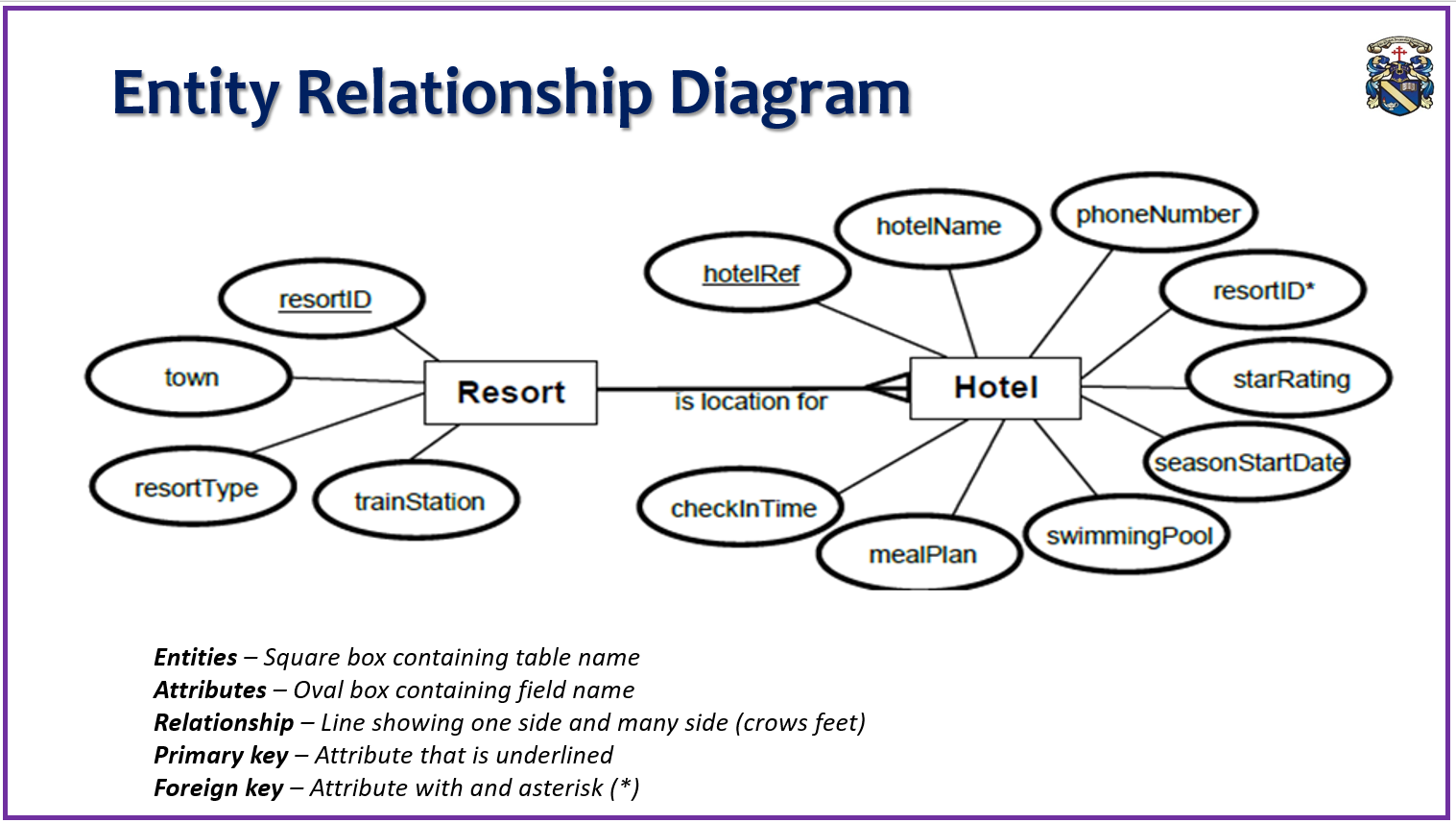Design - What do I need to know?
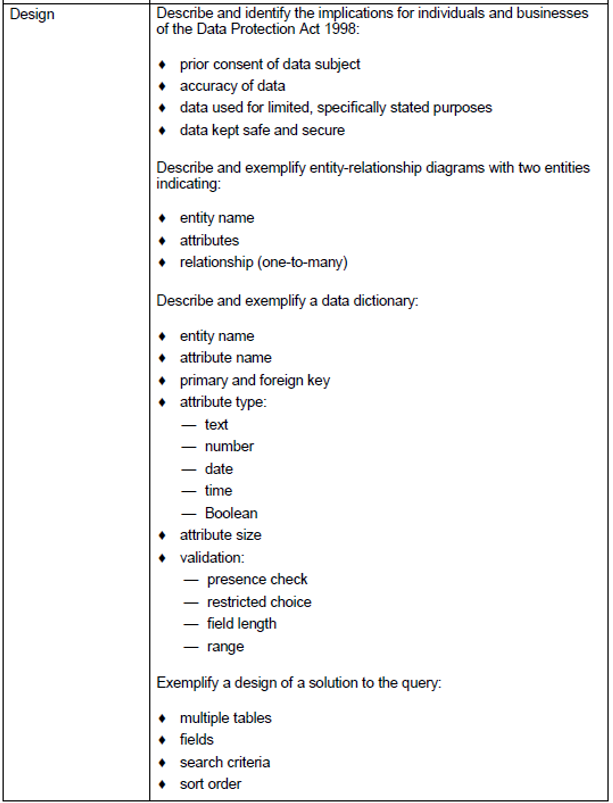
Notes & Slides
Data Dictionary
A data dictionary is used to record details about the database. It provides a description of the constraints or rules that apply to each of the attributes of each entity in the system.
A data dictionary is simply a large table that stores metadata - in other words, it stores data about data.
The structures needed to store data in the database are planned using a data dictionary.
- Each row provides details about one attribute in the system
- Each column specifies a rule or restriction that applies to the attributes.
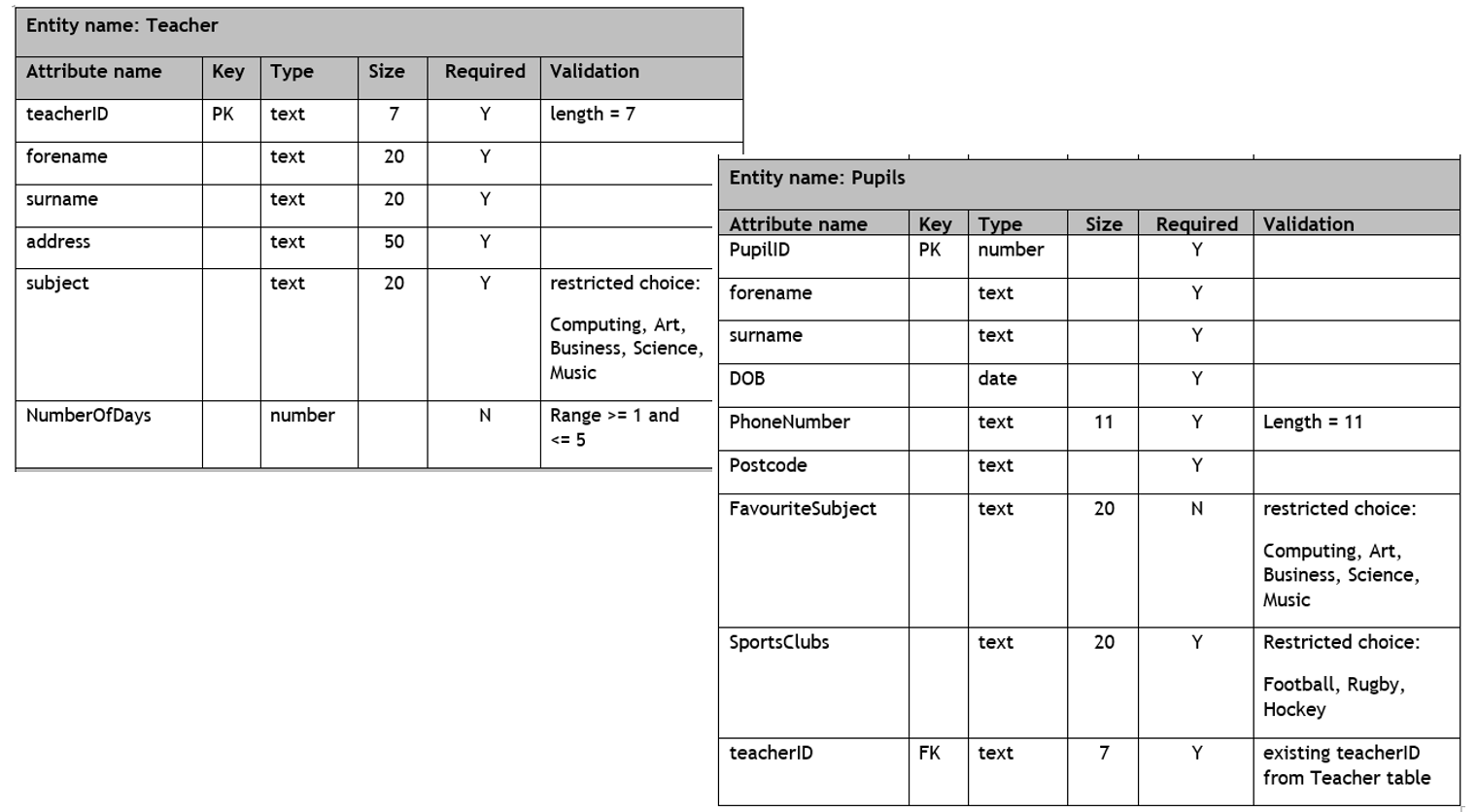
Other examples
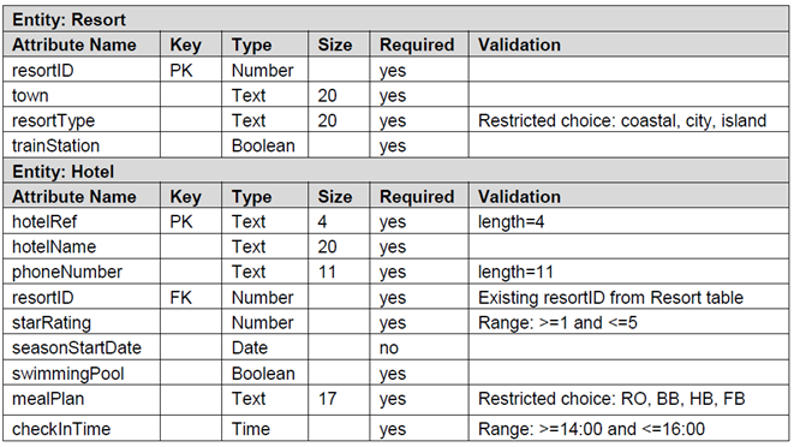
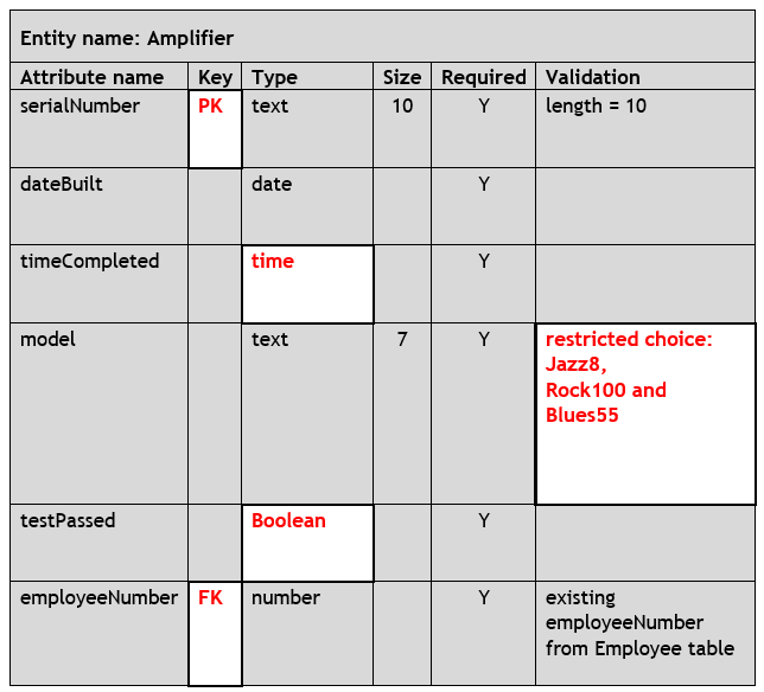
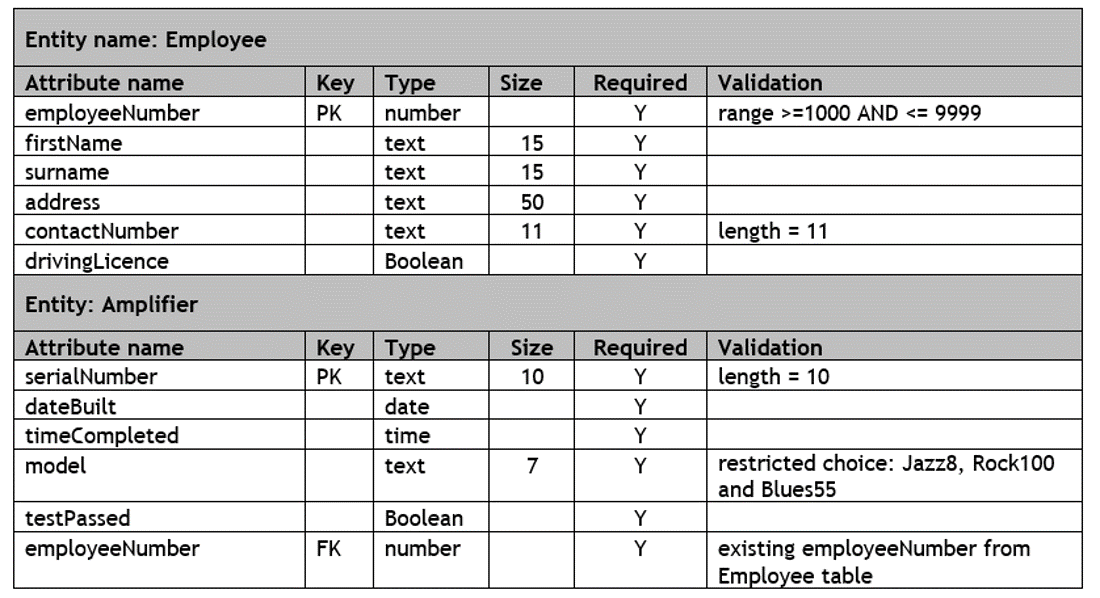
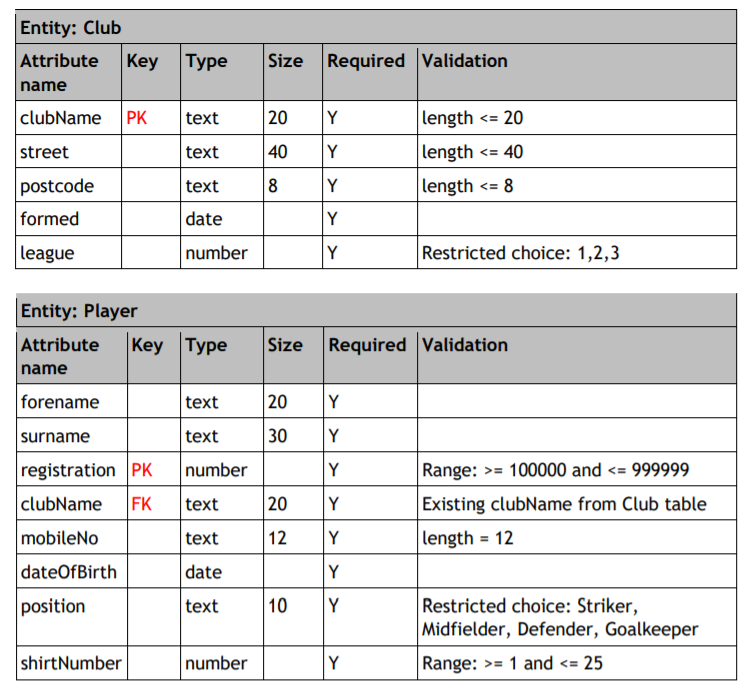
Entity Relationship Diagram
A table in a database holds the attributes for one entity only. Data can then be added in the form of records.
Rather than storing information in one table, relational databases store data across several tables.
Using relational databases that link tables using primary and foreign keys helps to avoid issues like insertion, deletion and update anomalies.
In a relational database, it is necessary to define the relationship that exists between different entities.
At National 5 level, it is necessary to understand and exemplify a one-to-many relationship.
One-to-many cardinality
A one-to-many relationship exists when one entity can be present in many different instances of another entity.
One-to-many relationships are the most common relationships in correctly implemented relational database management systems.
